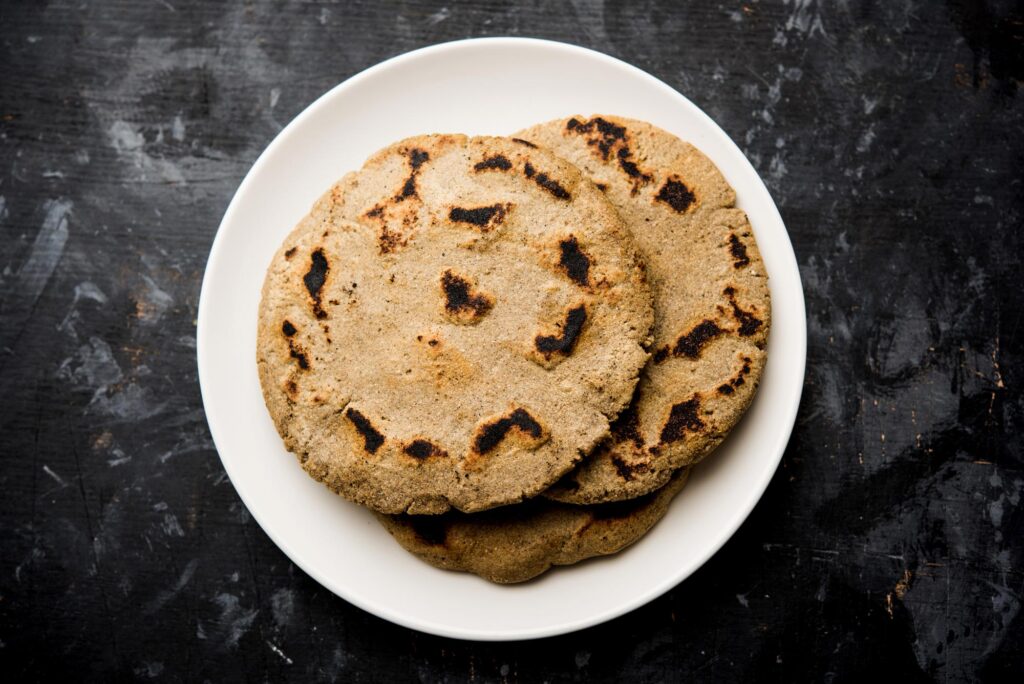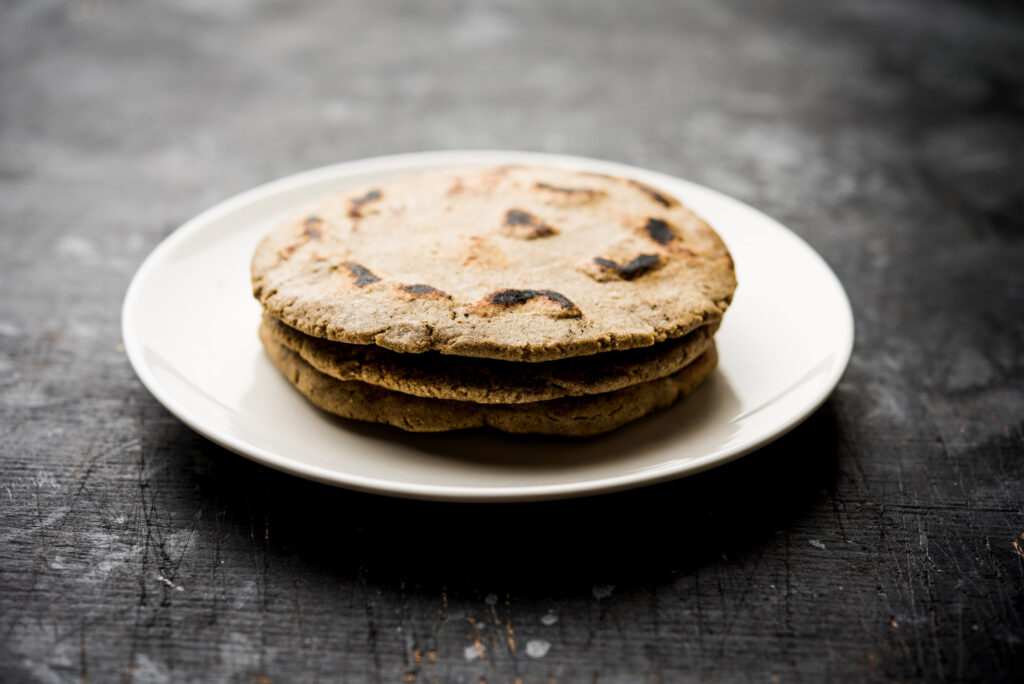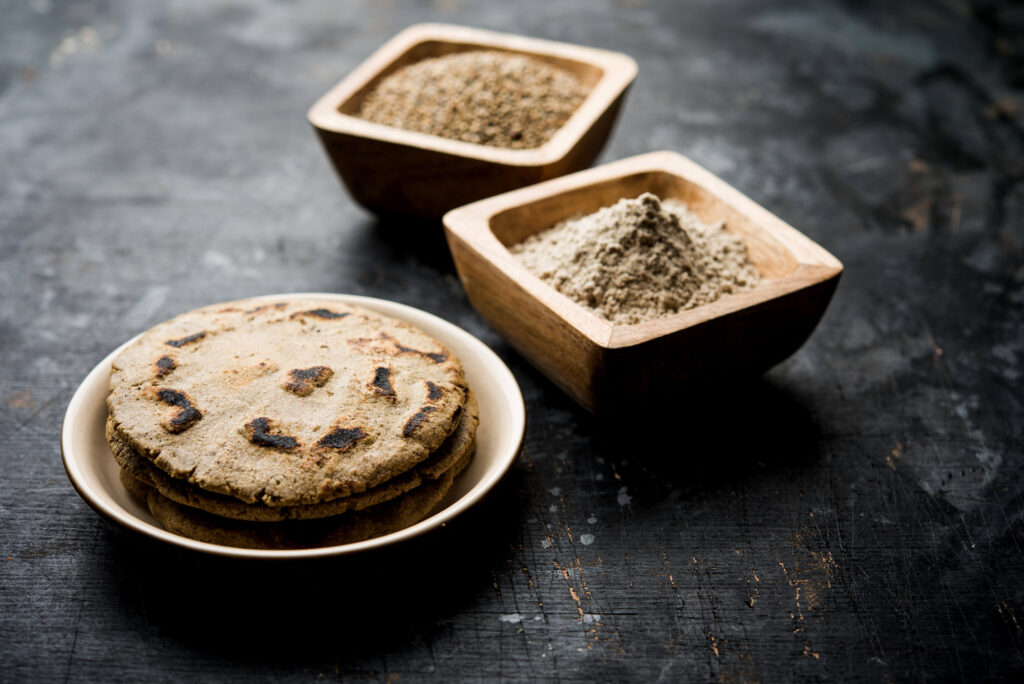Discover the authentic Traditional Bajre Ki Roti recipe with expert tips from Rajput Indian Cuisine. Learn to make this nutritious pearl millet flatbread using traditional techniques passed down through generations. Our comprehensive guide includes preparation methods, health benefits, and serving suggestions that bring the royal flavors of India to your kitchen with perfect results every time.
Bajre ki roti, a traditional Indian flatbread made from pearl millet flour, represents the essence of rustic Indian cuisine. This nutritious and gluten-free bread has been a staple in Indian households for centuries, particularly in Rajasthan, Gujarat, and Haryana regions. At Rajput Indian Cuisine, we honor these time-tested recipes that showcase India’s rich culinary heritage.
What Makes Bajre Ki Roti Special?
Pearl millet, known as bajra in Hindi, is one of India’s ancient grains. This hardy crop thrives in arid conditions and provides exceptional nutritional value. The resulting flatbread offers a distinctive nutty flavor and dense texture that pairs beautifully with traditional Indian curries and vegetables.

Health Benefits of Bajre Ki Roti
• Rich in fiber – Promotes digestive health and keeps you fuller longer
• High protein content – Essential for muscle development and repair
• Iron-rich – Helps prevent anemia and boosts energy levels
• Gluten-free – Perfect for those with celiac disease or gluten sensitivity
• Low glycemic index – Ideal for diabetes management
• Packed with magnesium – Supports heart health and bone strength
Traditional Bajre Ki Roti Recipe
Ingredients Required
• 2 cups bajra flour (pearl millet flour)
• 1 cup warm water (approximately)
• 1/2 teaspoon salt
• 1 tablespoon ghee or oil (optional)
• Extra flour for dusting
Step-by-Step Preparation Method
Step 1: Prepare the Dough
Mix bajra flour and salt in a large bowl. Gradually add warm water while mixing continuously. The dough should be soft but not sticky. Add ghee for enhanced flavor and texture.
Step 2: Kneading Technique
Knead the dough thoroughly for 5-7 minutes until smooth. Cover with a damp cloth and let it rest for 15-20 minutes. This resting period is crucial for achieving the perfect texture.
Step 3: Rolling the Roti
• Divide dough into small portions
• Dust your work surface generously with bajra flour
• Roll each portion into a thin, round flatbread
• Keep the thickness uniform for even cooking
Step 4: Cooking Process
Heat a cast-iron tawa or heavy-bottomed pan over medium-high heat. Place the rolled roti on the hot surface. Cook for 2-3 minutes until brown spots appear, then flip and cook the other side.

Expert Tips for Perfect Bajre Ki Roti
Temperature Control
Maintain consistent medium-high heat throughout the cooking process. Too high heat will burn the exterior while leaving the interior uncooked.
Dough Consistency
The dough should be softer than wheat flour dough but firm enough to roll without breaking. Adjust water quantity gradually to achieve the right consistency.
Rolling Technique
• Use plenty of dry flour while rolling
• Apply gentle, even pressure
• Roll from center outward for uniform thickness
• Work quickly to prevent drying
Storage and Serving
Fresh bajre ki roti tastes best when served immediately. Wrap in clean kitchen towels to keep warm. These rotis pair excellently with:
• Sarson ka saag (mustard greens curry)
• Dal preparations (lentil curries)
• Vegetable curries like bhindi or aloo
• Fresh yogurt and pickles
• Jaggery and ghee for a sweet treat
Nutritional Profile and Dietary Benefits
Bajre ki roti provides sustained energy release, making it an excellent choice for active individuals. The high fiber content aids digestion, while the protein supports muscle health. This traditional bread fits perfectly into modern dietary preferences, including gluten-free and diabetic-friendly meal plans.
Regional Variations and Cultural Significance
Different regions of India have unique approaches to preparing bajre ki roti. Rajasthani cuisine often incorporates additional spices, while Gujarati preparations might include jaggery for subtle sweetness. These variations reflect the diverse culinary landscape that Rajput Indian Cuisine celebrates in our authentic dishes.

Troubleshooting Common Issues
Cracking while rolling: Add a little more water to the dough
Roti too hard: Ensure adequate moisture and don’t overcook
Uneven cooking: Maintain consistent heat and proper thickness
Breaking apart: Allow proper resting time for the dough
Bring Authentic Indian Flavors Home
Mastering bajre ki roti connects you with centuries of Indian culinary tradition. This wholesome bread represents the perfect balance of nutrition and flavor that defines authentic Indian cuisine. The techniques shared here reflect the same attention to detail and traditional methods that make Rajput Indian Cuisine a trusted name for genuine Indian flavors across Virginia’s tri-cities.
Whether you’re exploring gluten-free options or seeking to expand your culinary horizons, bajre ki roti offers an authentic taste of India’s rich food heritage. Practice these traditional techniques, and soon you’ll be creating restaurant-quality flatbreads in your own kitchen.